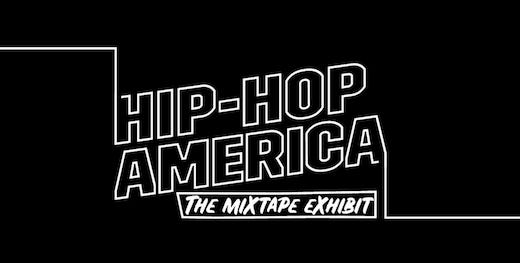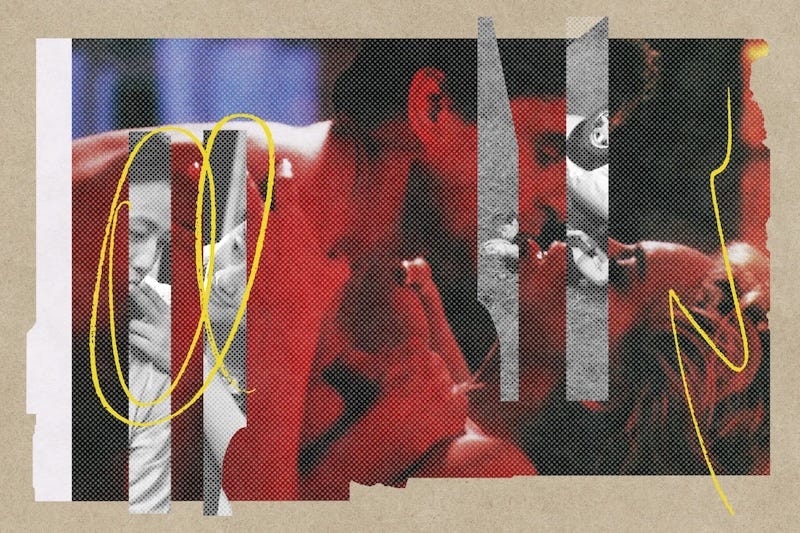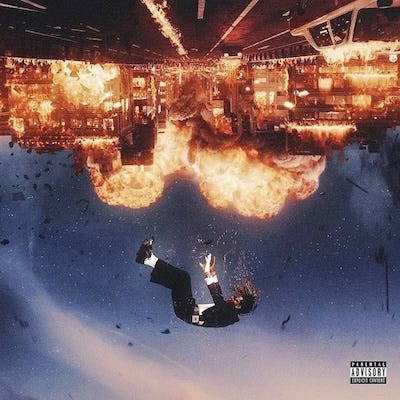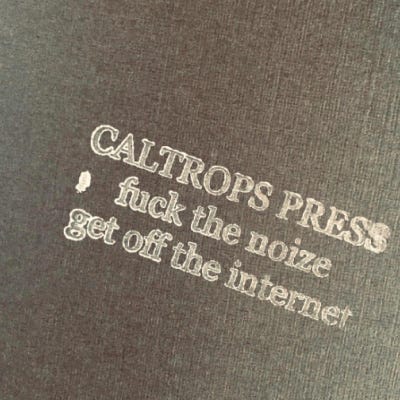Cutting Room Jams: Class of '83
A survey of recent work includes writing on Drake, erotic films, and the best rap of 1983.
During the past several weeks, I worked on quite a few things that I haven’t mentioned in this newsletter.
Rolling Stone
Drake: On October 6, Rolling Stone published my review of Drake’s For All the Dogs. In a mixed review, I wrote that there’s “evidence of a good album somewhere within the hour-and-a-half long bloat” while generally faulting the Canadian rapper’s recent, controversial shift towards male grievance.
Last year, I received dozens of hate Tweets from Drake’s fans for my negative review of Her Loss, his collaboration with 21 Savage. But since I stopped promoting professional work on Twitter/X — I only post about Humthrush and this newsletter — no one called me out after For All the Dogs went live.
The 50 Best Erotic Thrillers of All Time: Rolling Stone also published a list of The 50 Best Erotic Thrillers of All Time on October 6. I contributed five blurbs. Thanks to David Fear for the opportunity.
After Dark My Sweet
Bitter Moon
Angel Heart
Wild Side
Dressed to Kill
Offset: On October 13, Rolling Stone published my review of Offset’s Set It Off. In a mixed assessment, I wrote that the album “suggests that he’s still trying to define himself as an individual and not just one-half of a famous couple or one-third of an innovative group.”
Humthrush.com
The 60 Best Rap Singles of 1983
On October 23, I posted a list of top singles from 1983, the latest installment in my ongoing series of Best Rap Singles lists. In the accompanying short essay, I wrote that the year epitomizes “what would soon be called the ‘new school,’ the first generation of artists to follow the pioneers who created hip-hop culture.” Here’s nine well-known hip-hop-adjacent acts who made their first recordings that year.
Tony Butler: In 1983, Miami producer/vocalist “Pretty Tony” produced a handful of club hits, including Freestyle’s “Freestyle Express,” Debbie Deb’s “When I Hear Music,” and his own “Fix It in the Mix” that had a major club impact. Though they’re mostly known as early examples of what later became known as freestyle — a sound largely credited to New York’s Black and Latinx community — Butler’s influence on Miami hip-hop in general makes him worthy of inclusion.
Doug E. Fresh: The Harlem rapper and beatboxer first appeared on Boo-Dah Bliss Crew’s “Pass the Boo-Dah,” a parody of Musical Youth’s “Pass the Dutchie.” He’d make a much bigger impact two years later with “The Show,” his gold-selling 12-inch as Doug E. Fresh & The Get Fresh Crew.
Egyptian Lover: “Dial-A-Freak,” a 12-inch from the L.A. mobile DJ crew Uncle Jamms Army, is essentially a showcase for rapper, producer, and vocalist Egyptian Lover. The following year, he scored a Black radio hit with “Egypt, Egypt” and issued On the Nile, which is arguably the first L.A. hip-hop album.
Ice-T: The famed rapper issued his first 12-inch, “The Coldest Rap,” a track co-produced by Jimmy Jam & Terry Lewis as well as Daniel Sofer. In interviews, Ice-T is generally dismissive of his early work prior to 1986’s “6 in the Mornin’.” I’d argue that “The Coldest Rap” has its charms.
Maggotron: James McCauley produced his first 12-inch, “Computer Funk,” under the alias Osé. Much like Butler, the name Maggotron may have more resonance in electronic dance culture. But in the late 80s, he produced several Miami bass records with raps, including Smokey Dee & DXJ featuring Super J.B.’s Hardcore Bass.
Marley Marl: In 1983, Mr. Magic’s protégé landed his first production credit on Dimples D’s “Sucker D.J.’s (I Will Survive),” an answer record to Run-D.M.C.’s “Sucker M.C.’s (Krush Groove 1).” The following year, he made his reputation with an even bigger answer record: Roxanne Shanté’s “Roxanne’s Revenge.”
Rodney O: Teenage rapper Rodney Oliver debuted on the Caution Crew’s 12-inch “Rhythm Rock (I Like It).” Some argue that the crew’s second single, “Westside Storie,” is the first song about gangbanging, but a close listen to their lyrics makes that internet claim seem farfetched. Nevertheless, Rodney O didn’t achieve stardom until his 1987 12-inch, “Everlasting Bass.”
Run-D.M.C.: As the leaders of the “new school,” the Queens group and their historic debut single, “It’s Like That” / “Sucker M.C.’s” hardly need introduction.
Silver Fox: Reggie “Silver Fox” Hobdy was a member of Fantasy Three, who recorded two highly regarded cult 12-inches, “Biters in the City” and “It’s Your Rock.” While he never achieved stardom, Silver Fox has been cited as an influence by several major golden era rappers, including Big Daddy Kane.
First Impressions
When I launched Humthrush last year, the design team and I created a scroll originally called “Sample Packs.” It was inspired by The Drift’s “Mentions.” But after much trial-and-error, it’s clear the category hasn’t worked out. Since the scroll doesn’t have individual links, the items are hard to promote. Also, my site gets more Google search traffic than direct visitors, so they seem to go unread. I hope to replace it with something more effective next year.
I posted four items last month.
Caltrops
On September 22 I posted an interview with Joseph Rathgeber, who publishes the print zine and Tumblr site Caltrops. I wrote that Caltrops “has become an key artifact of the ongoing underground rap renaissance” and “serves as a showcase for esoteric music analysis, where albums become entry points into a lexicon of cultural references.”
Hip-Hop America: The Mixtape Exhibit
Finally, I’d like to mention a writing project that hasn’t been published…yet?
Throughout August and September, I worked on the GRAMMY Museum’s Hip-Hop America: The Mixtape Exhibit at the invitation of exhibit co-curator Felicia Angeja Viator — whom I interviewed for a 2022 Pitchfork story on hip-hop archives — and chief curator Jason Emmons. I was among several dozen people who participated in the project. My contribution involved selecting 200 songs and writing pithy descriptions for them that visitors could experience in one of the exhibit areas. My selections were also compiled into a Spotify playlist.
Unfortunately, due to time constraints and technical issues, my work didn’t appear in the exhibit when it opened on October 7. I’ve been told there’s a good chance that elements of the exhibit will be moved around during its yearlong installment, resulting in space for the area that I was commissioned for. I will let you know if and when that happens.
In the meantime, I’m thrilled that I got a chance to work with the GRAMMY Museum and Viator, and she has since graciously advised me on other projects that I hope to announce next year. Her 2020 book, To Live and Defy in LA: How Gangsta Rap Changed America, is worth seeking out.









